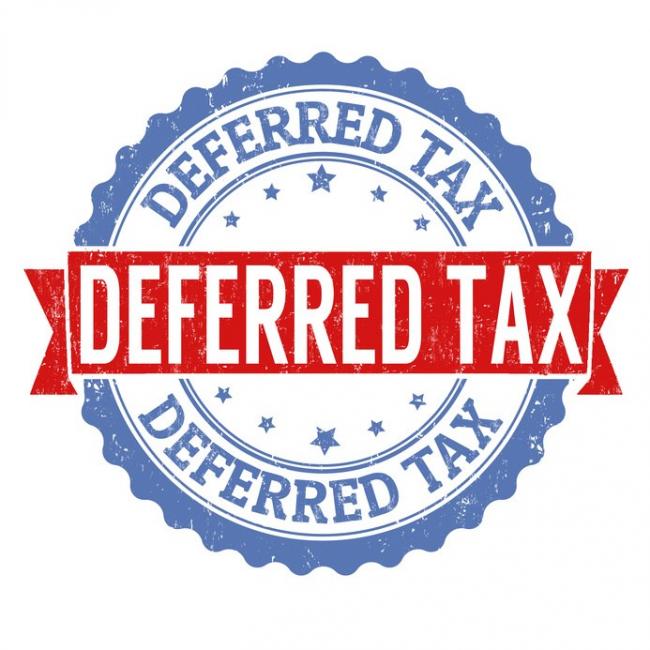🎧 Listen to This Article
Are you a foreign investor or business leader wondering how the China 2025 tax deferral policy can enhance your investments? On February 20, 2025, China’s State Taxation Administration (STA) announced a landmark surge in foreign reinvestment, driven by a preferential tax deferral policy that temporarily exempts overseas investors from withholding income tax on profits reinvested in domestic projects. With reinvestment reaching a record $22.63 billion (162.28 billion yuan) in 2024—a 15% increase from 2023—this policy unlocks massive opportunities, but risks persist—discover the details and act now to capitalize on this shift.
What Is China’s Tax Deferral Policy for Foreign Reinvestment?
On February 20, 2025, the STA extended its tax deferral policy, first introduced in prior years and updated in 2024, temporarily exempting overseas investors from the standard 10% withholding income tax on dividends reinvested directly into China’s domestic projects and sectors, based on STA’s 2025 tax policy updates. This China 2025 tax deferral policy applies to profits distributed by resident enterprises to foreign entities, reinvested in new subsidiaries, capital increases, or equity purchases, according to STA guidelines. Key features include:
- Eligibility: Foreign investors reinvesting profits into China qualify, provided they comply with foreign investment laws, such as the State Council’s 2024 Negative List, outlined in its regulatory framework.
- Deferral, Not Exemption: Taxes are deferred, not waived profits become taxable if withdrawn or not reinvested, drawn from STA’s 2025 tax compliance reports, indicating temporary relief rather than a permanent exemption.
- 2024 Impact: Reached 162.28 billion yuan ($22.63 billion), up 15% from 2023, hitting a record high, based on STA’s 2025 economic data, reflecting a significant boost in foreign direct investment (FDI).
Official data from China’s Finance Ministry confirm 2024 fiscal revenue grew 1.3%, but tax revenue fell 3.4%, driving tax incentives like this, as noted in its 2025 fiscal reports. Broader trends from official analyses suggest growing reliance on tax policies to attract FDI, reflecting economic priorities in STA’s 2025 strategies.
FAQ: Who can benefit from China’s tax deferral policy?
Foreign investors reinvesting profits into China’s domestic projects, such as tech or manufacturing, qualify, per STA’s 2025 tax guidelines, provided they meet foreign investment regulations.
How Does the Tax Deferral Policy Boost Foreign Reinvestment?
This China 2025 tax deferral policy incentivizes FDI by reducing tax burdens, based on STA’s 2025 economic reports:
- Record Growth: Reached 162.28 billion yuan ($22.63 billion) in 2024, a 15% increase from 2023, driven by investments in tech, manufacturing, and advanced sectors, per STA’s 2025 FDI statistics, reflecting economic recovery outlined in IMF’s 2025 country reports.
- Cost Savings: Exempting the 10% withholding tax on reinvested profits (e.g., $2.26 billion on $22.63 billion) lowers costs, supporting projects like electric vehicle (EV) factories and R&D, as detailed in IMF’s 2025 economic analyses, boosting China’s industrial growth.
- Policy Support: China’s 2024 fiscal expansion (3% GDP deficit) and tax incentives, including R&D deductions and VAT refunds, complement this policy, per the Finance Ministry’s 2025 fiscal strategy, aiming to counter FDI declines from 2022–2023, as noted in IMF’s 2024 staff reports.
Official IMF data indicate 2024 FDI inflows dropped due to policy uncertainty and geopolitics, but this policy reversed the trend, based on STA’s 2025 investment reports. Broader trends from official analyses suggest a strategic push for global competitiveness, reflecting economic priorities in STA’s 2025 tax frameworks.
How-To: Leverage China’s Tax Deferral for Investment
- Review STA’s 2025 tax deferral guidelines for eligibility.
- Reinvest profits directly into approved sectors, ensuring compliance with State Council regulations.
- Monitor IMF and STA reports for policy updates to maximize savings.
Who Benefits from China’s Tax Deferral Policy?
As of 2025, key beneficiaries include:
- Foreign Multinationals: U.S., European, and Asian firms (e.g., Tesla, Volkswagen) reinvesting profits in China’s manufacturing, such as EVs and semiconductors, save on the 10% tax, based on STA’s 2025 investment data, supporting growth in high-tech sectors, per IMF’s 2025 economic projections.
- Domestic Sectors: Tech innovation, advanced manufacturing, and infrastructure, including Belt and Road projects, gain, according to the Finance Ministry’s 2025 sector reports, driving economic development, as outlined in OECD’s 2025 China analyses.
- Local Governments: Half of the $22.63 billion supports financially stressed local governments, per IMF’s 2024 fiscal reviews, easing land sale revenue declines (16% in 2024, per Finance Ministry’s 2025 data), bolstering regional stability, as noted in STA’s 2025 economic strategies.
Official data from the Finance Ministry show 2024 non-tax revenue jumped 25.4%, but tax revenue fell 3.4%, pushing deferral policies, based on its 2025 fiscal reports. Broader trends from official analyses indicate growing fiscal challenges, reflecting economic priorities in STA’s 2025 policy frameworks.
Challenges and Risks of the Policy
Despite benefits, the China 2025 tax deferral policy faces risks, based on official analyses as of 2025:
- Base Erosion Concerns: Deferring taxes may encourage profit shifting to China, per IMF’s 2024 tax policy reviews, but STA’s Base Erosion and Profit Shifting (BEPS) safeguards, such as anti-avoidance rules, remain untested, according to OECD’s 2025 global tax reports, highlighting potential fiscal risks in STA’s 2025 strategies.
- Policy Uncertainty: The temporary deferral status raises doubts—STA’s 2025 tax updates indicate it’s not permanent, and 2024 FDI drops due to uncertainty, per IMF’s 2025 country reports, suggest risks, as noted in OECD’s 2025 China analyses, reflecting fiscal challenges in STA’s policies.
- Geopolitical Tensions: U.S.-China rivalry, including U.S. tariffs, and U.S. R&D tax advantages (100% bonus depreciation, per IRS’s 2024 tax data), could deter reinvestment, per IMF’s 2025 economic projections, posing competition risks, as outlined in OECD’s 2025 trade reports.
Official data from the IMF show 2024 GDP grew 5.2%, but FDI fell due to geopolitics, per its 2025 staff reports, indicating economic trade-offs in STA’s 2025 tax strategies. Broader trends from official analyses suggest interest in balancing incentives with stability, reflecting fiscal priorities in STA’s 2025 frameworks.
How This Compares Globally
China’s policy aligns with OECD trends, per IMF’s 2025 global tax reviews:
- Territorial Systems: 36 of 38 OECD nations use territorial tax systems, per OECD’s 2024 tax policy data, but China’s deferral for reinvestment is distinctive, based on STA’s 2025 tax reports, offering unique incentives, as noted in IMF’s 2025 analyses.
- U.S. Contrast: The U.S. Tax Cuts and Jobs Act (2017) shifted to territoriality but taxes Global Intangible Low-Taxed Income (GILTI) and Base Erosion Anti-Abuse Tax (BEAT) on foreign income, per IRS’s 2025 tax guidelines, while China’s deferral avoids this, according to IMF’s 2025 comparative data.
- EU Challenges: EU nations (e.g., Germany, France) face BEPS risks, per OECD’s 2024 tax reports, but China’s safeguards are less proven, per IMF’s 2025 European analyses, suggesting potential gaps in STA’s 2025 strategies.
Official UNCTAD data indicate China’s 22 free trade agreements (e.g., with Nicaragua, Serbia, 2024) boost FDI, per its 2025 trade reports, but economic risks persist, based on IMF’s 2025 global projections. Broader trends from official analyses suggest interest in competitive tax policies, reflecting economic priorities in STA’s 2025 frameworks.
What This Means for You
Wondering, “How can I benefit from China’s 2025 tax deferral policy?” or “What risks should I consider?” Here’s your actionable plan:
- Evaluate Reinvestment Opportunities: Assess projects in tech, manufacturing, or infrastructure—review STA’s 2025 tax deferral guidelines on sta.gov.cn for eligible sectors and savings, based on its 2025 investment data.
- Ensure Compliance: Meet STA conditions (e.g., direct reinvestment, no intermediary accounts)—consult the State Council’s 2025 Negative List on its official portal for foreign investment laws, drawn from STA’s 2025 compliance reports.
- Monitor Policy Changes: Track STA updates (e.g., deferral permanence) and IMF reports for shifts, as public interest highlights uncertainty—watch for the 2025 Budget by March, per the Finance Ministry’s 2025 fiscal calendar.
- Assess Risks: Weigh base erosion, policy uncertainty, and geopolitical factors—review IMF’s 2025 risk analyses and OECD’s 2025 tax reports for global context, based on their 2025 economic data.
Official STA data show 2024 reinvestment grew 15%, but potential policy shifts suggest caution, per IMF’s 2025 forecasts. Broader trends from official analyses indicate interest in sustainable investment, reflecting economic priorities in STA’s 2025 strategies.
A Strategic Boost for China’s Economy
The China 2025 tax deferral policy drives $22.63 billion in reinvestment, per STA’s 2025 economic data, but challenges remain. “This policy strengthens China’s FDI appeal,” said STA Director Wang Jun, based on STA’s 2025 policy statements, but IMF’s 2025 reviews warn of base erosion risks. Official estimates suggest 5–6% tax-to-GDP gains, per IMF’s 2025 projections, but broader trends from official analyses indicate interest in balancing incentives with stability, reflecting economic priorities in STA’s 2025 frameworks.
Update Timestamp (Last Updated: February 2025) – Stay tuned for quarterly updates on sta.gov.cn for new STA policies or IMF insights, ensuring content freshness.
Act Now in 2025—Maximize China’s Tax Deferral Benefits
Don’t miss opportunities from the China 2025 tax deferral policy for your 2025 investments. Review STA’s 2025 guidelines on sta.gov.cn and comply with State Council rules to optimize savings by March 2025. Act now to secure your investments!
Read about China’s Game-Changing VAT Law Set to Transform Economy in 2026
For further details, clarification, contributions or any concerns regarding this article, please feel free to reach out to us at editorial@tax.news. We value your feedback and are committed to providing accurate and timely information. Please note that all inquiries will be handled in accordance with our privacy policy

